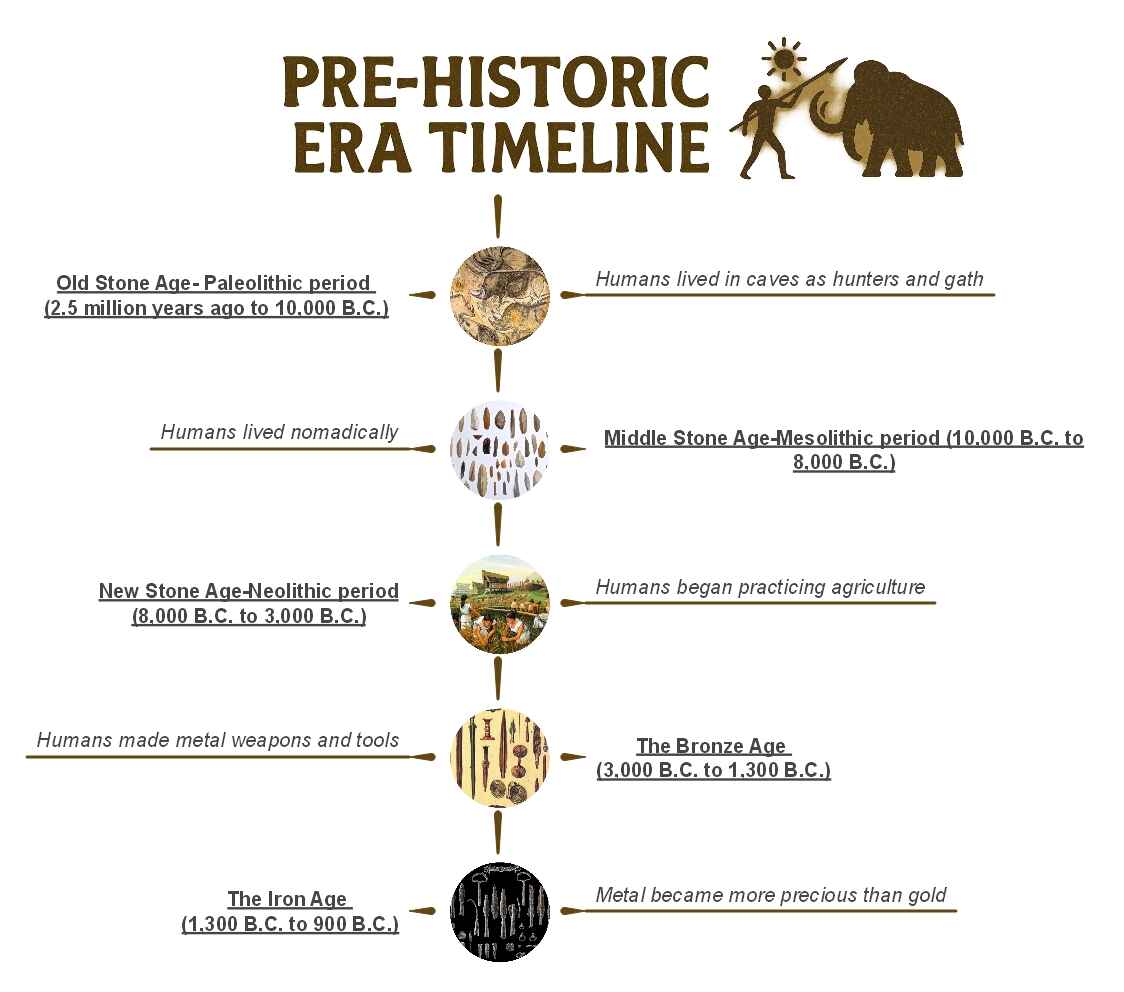The prehistoric era timeline takes us back to a time when humans were just learning to survive. There were no written records to rely on, so scientists used clues to tell our incredible story. By studying fossils, ancient tools, and cave art, they mapped out how humans lived long ago. This timeline spans 2.5 million years and shows major milestones in human development. Understanding this evolution may give us a new perspective about the world today.
In this article
Exploring the Prehistoric Ages Timeline
The prehistoric timeline is split into three key eras: the Stone Age, the Bronze Age, and the Iron Age.
However, the Stone Age era consists of three periods: Paleolithic, Mesolithic, and Neolithic. Each of these periods is significant as humans evolved and adapted to the world over millions of years. And even though there are no written records of their existence, they left behind enough physical evidence to tell their stories.
Middle Stone Age-Mesolithic period (10,000 B.C. to 8,000 B.C.)
During the Mesolithic period, humans learned to use small stone tools. They carved tips on stone and tied them to bone or wood as makeshift hunting tools. Around this time, humans began practicing agriculture, encouraging them to live nomadically in camps near water sources.
New Stone Age-Neolithic Period (8,000 B.C. to 3,000 B.C.)
The Neolithic period is marked by advances in agriculture, food production, and construction. Humans began domesticating animals and cultivating cereal grains. This major shift in their food source meant they could give up the nomadic way of life and settle in more permanent camps. They learned to build sophisticated tools and new construction techniques while polishing their sewing and weaving skills.
The Bronze Age (3,000 B.C. to 1,300 B.C.)
During the Bronze Age, humans discovered the use of metals like bronze, copper, and tin alloy. They replaced stone tools and weapons with metal counterparts and implemented new ideas in farming. This period also saw many advancements in architecture and art, including textiles.
No longer dependent on the nomadic way of life, humans began forming villages and cities. Even their houses were much more sophisticated with thatched or turf roofs and fireplaces.
The pharaohs, who built the pyramids, ruled Egypt in the same era. This means that humans were introduced to organized government, law, and religion during this time.
The Iron Age (1,300 B.C. to 900 B.C.)
The Iron Age is the final period in the prehistoric era timeline. During this time, humans discovered ways to heat and forge iron. This feat triggered a series of inventions and advancements, especially in weaponry and architecture.
People began building rooms inside their homes, along with stables for animals. Castles and temples were built; humans discovered a more sophisticated way of living. By the end of the Iron Age, writing systems began to emerge, ushering humans into a new era.
How to Make a Timeline using EdrawMind?
Interested in making a timeline like the one above? Try EdrawMind. This tool is perfect for creating detailed diagrams. The best part about EdrawMind is that you don't have to be a design expert to create timelines. You can either choose from pre-built templates or build one from scratch. Just download the app and get started.
Step 1: Start with a blank canvas
- Launch EdrawMind and sign in using your Wondershare account. You can also log in with your socials.
- Click Create on the left panel of your home screen.
- Choose Local Mindmap from the Blank Document menu.
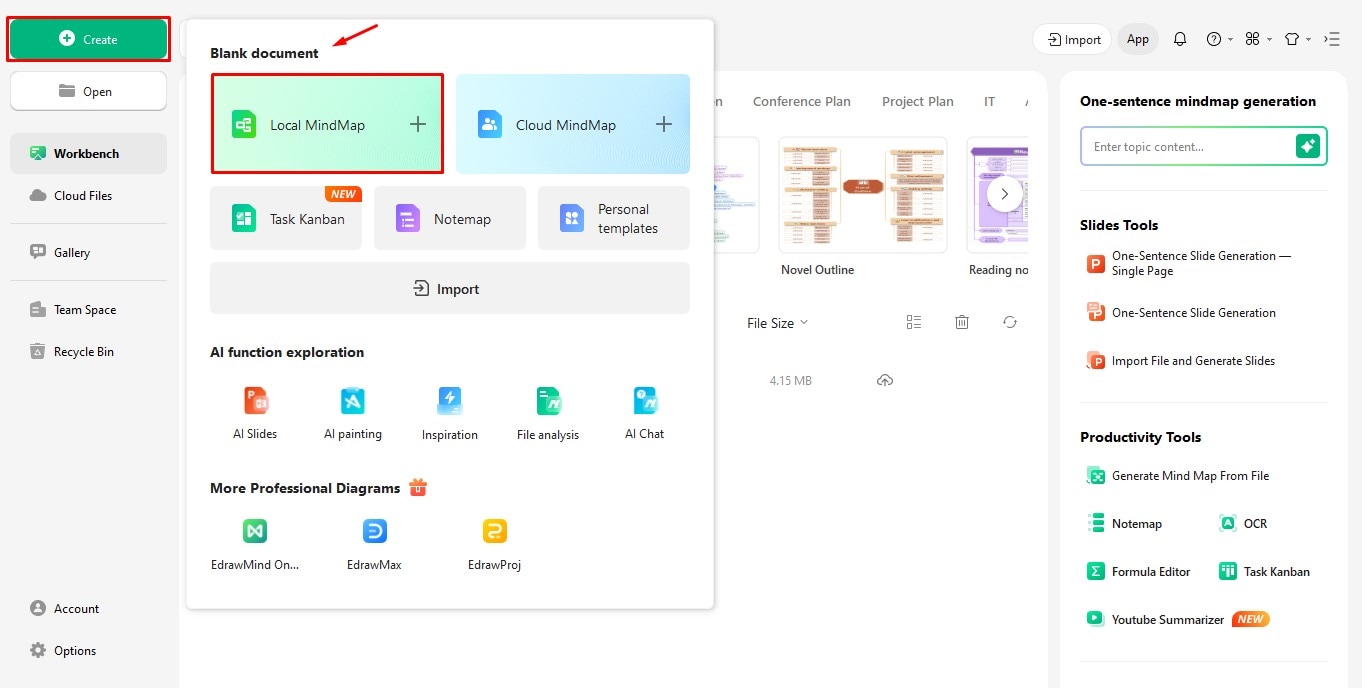
Step 2: Change the layout
Let's change the timeline's layout before adding any details. Select the Main Idea to reveal the floating menu.
- Click Layout for more timeline structures.
- Choose the third option for the timeline.
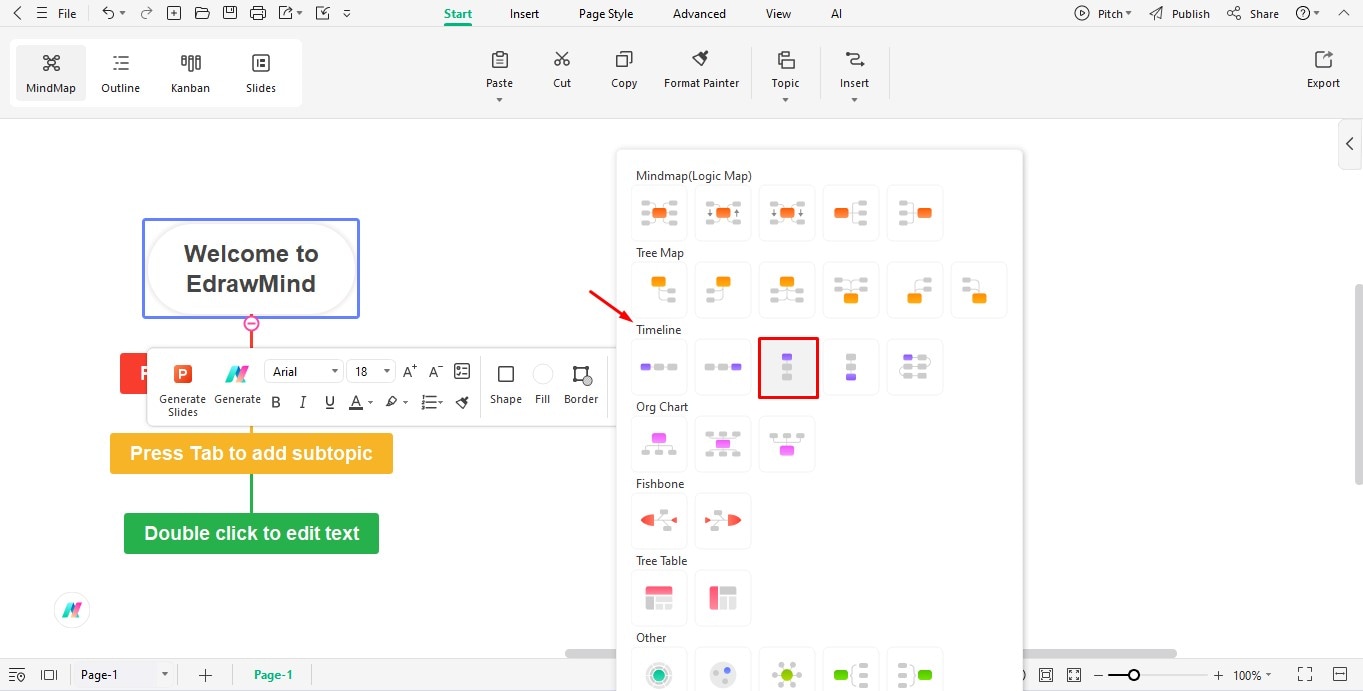
Step 3: Insert heading
- Select Main Idea and remove the text inside the box.
- Type the timeline heading in the same text box.
- Click the Main Idea and navigate to the Style panel on the left.
- Uncheck Fill Color and Shadow to remove the outline around the image.
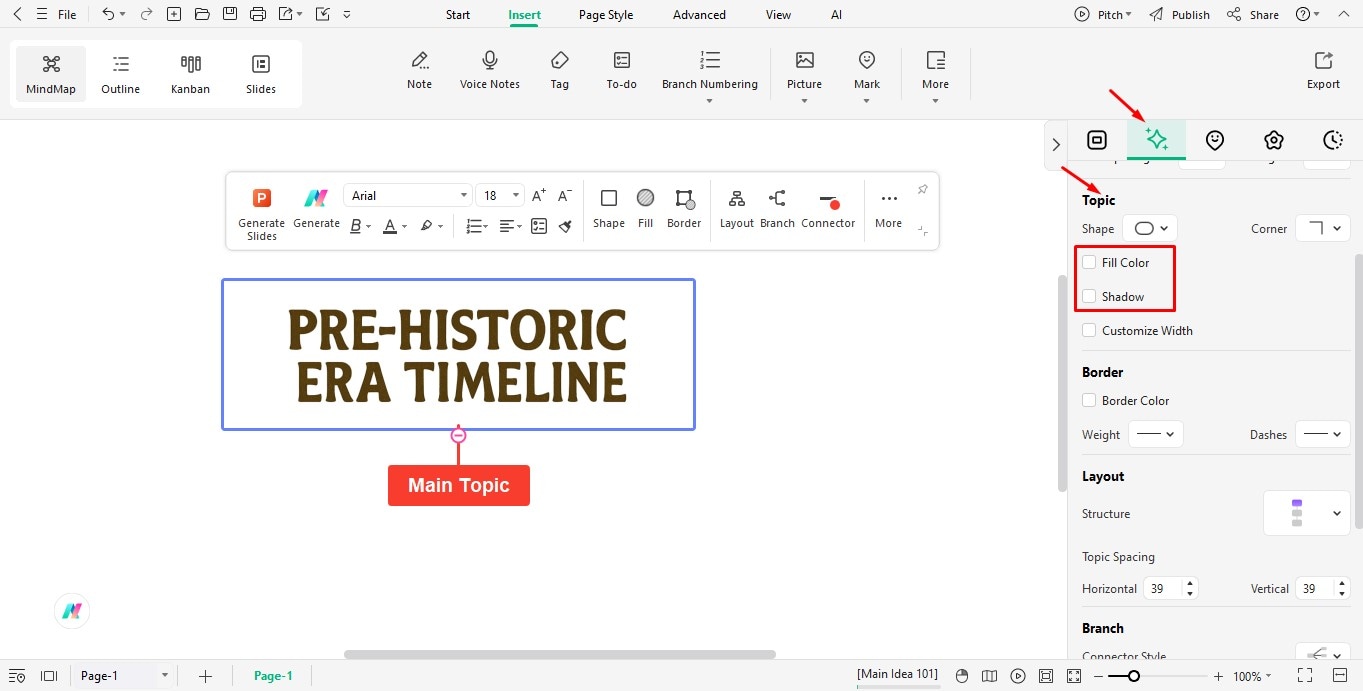
Step 4: Add an image
Images can greatly improve the appearance of your timeline. So, let's upload an image with the heading.
- For that, click Insert on the top toolbar.
- Select Picture > Picture from the revealed menu and upload an image next to the heading.
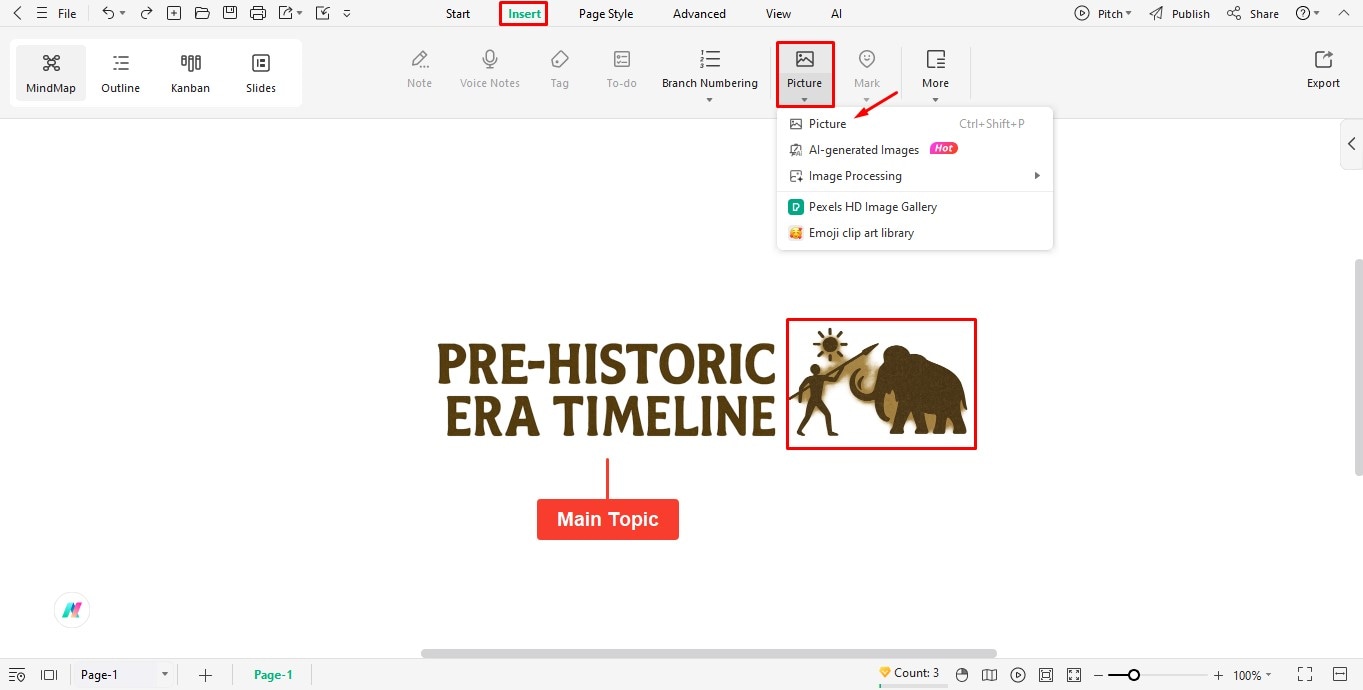
Step 5: Edit the main topic
- Select the Main Topic and remove the text inside.
- Now follow the steps: Insert > Picture > Picture to add an image in the center.
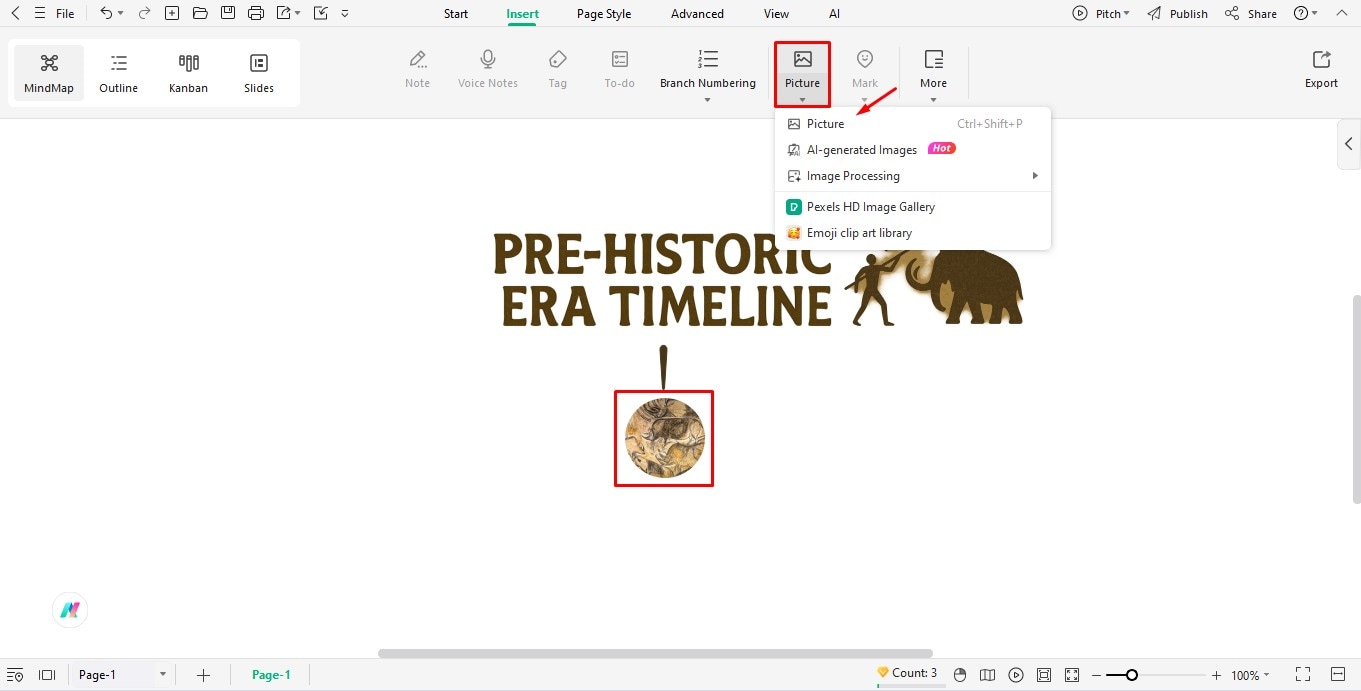
Step 6: Change layout structure
Before adding the subtopics, you need to change the timeline's layout structure.
- Click Main Idea and locate Layout on the left editing panel.
- Choose the third structure from the options.
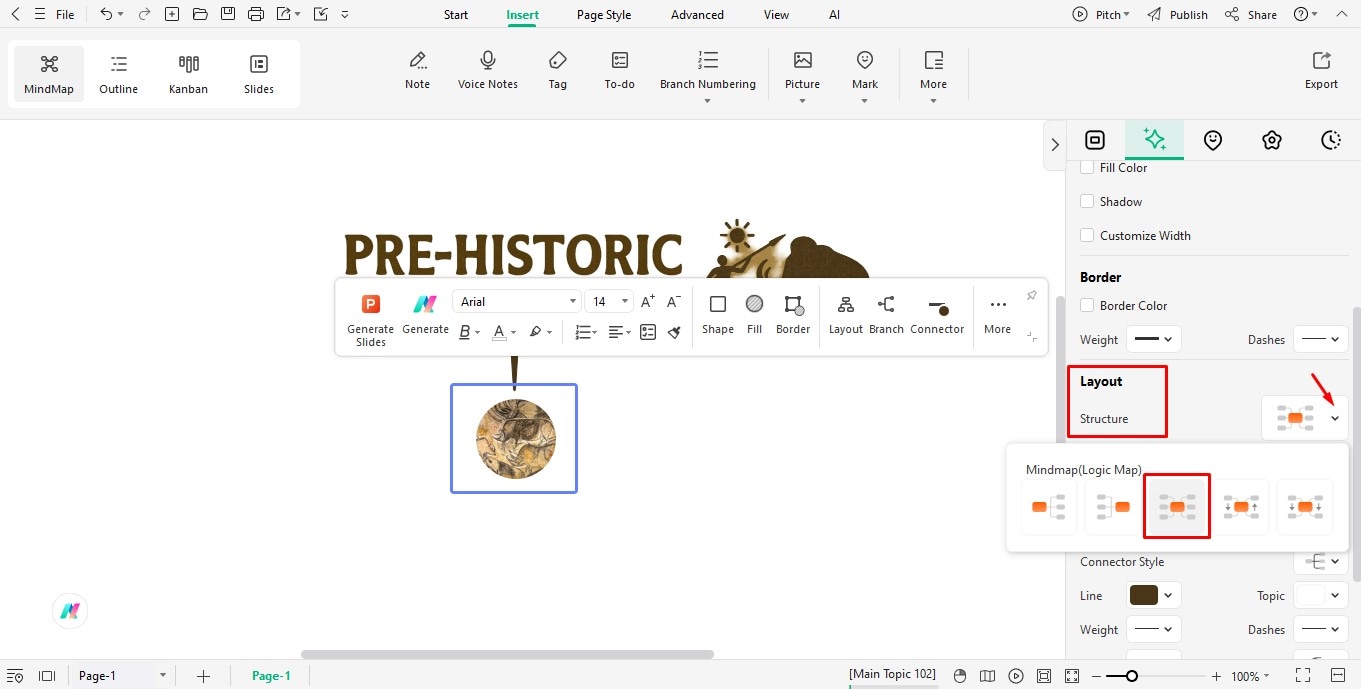
Step 7: Add subtopics
Now you can start adding subtopics to the Main Idea.
- Press the Tab button twice and position a subtopic on either side of the Main Idea.
- Insert the period name in the left text box, and its highlights in the right one.
- Select the right text box and navigate to the right editing panel. Locate Shape and choose the style shown from the options.
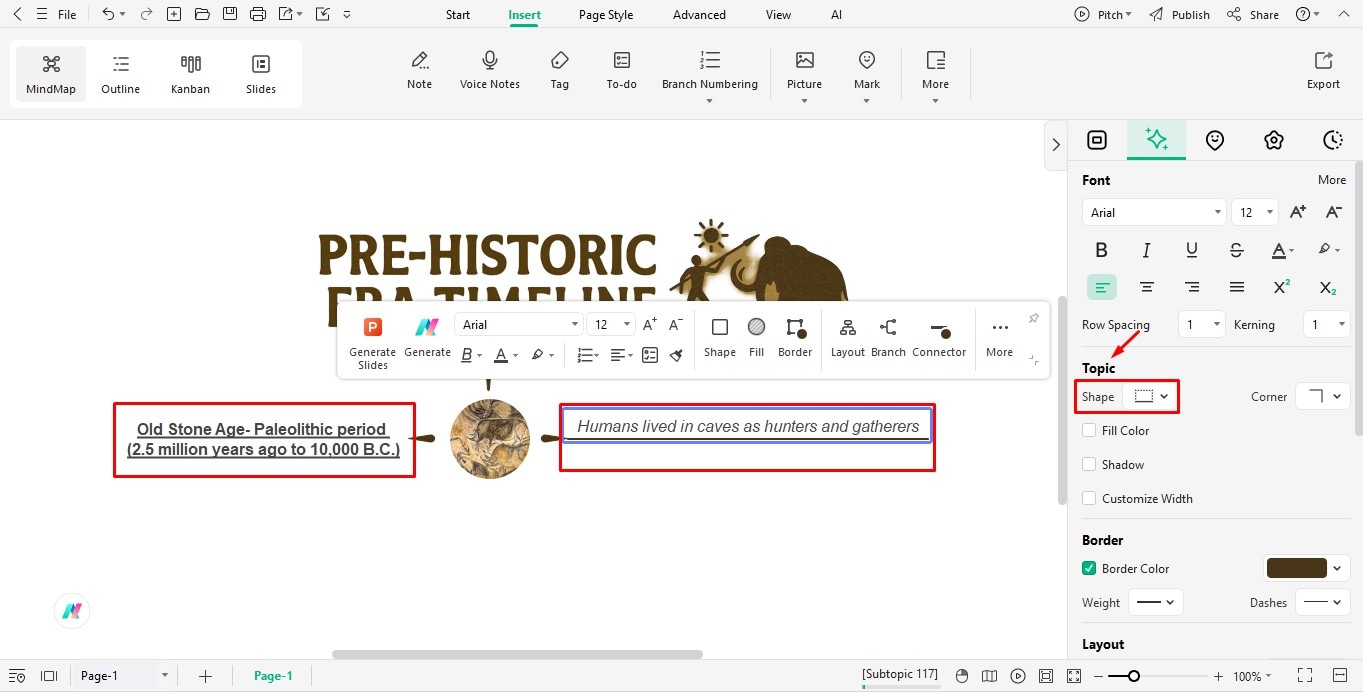
Step 8: Export Timeline Image
Continue adding more prehistoric periods and highlights until your timeline is complete.
- Once you're ready to download, click File in the top-left corner of the toolbar.
- Select Save to download the file in EdrawMind's default format.
- You can also save the file in formats like JPEG, Word, PPT, HTML, TXT, PDF, PNG, and SVG by selecting Export from the same menu.
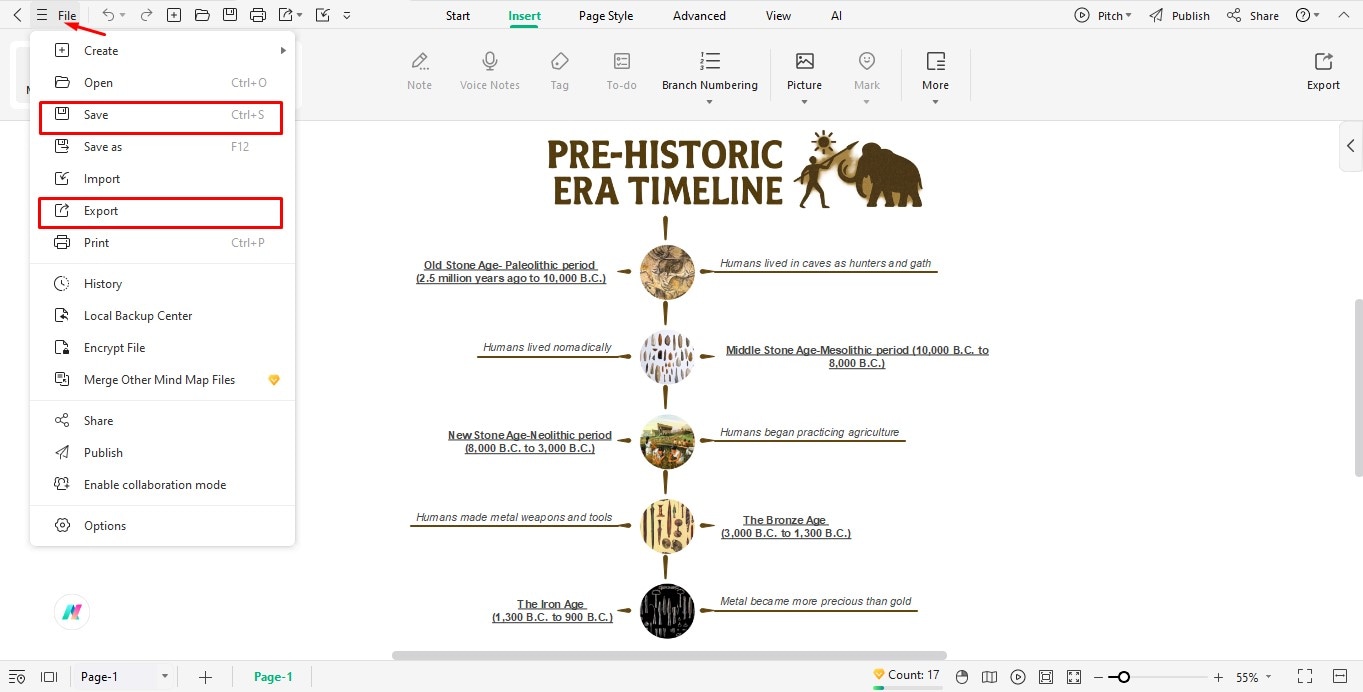
Final Words
The prehistoric era timeline is a powerful reminder of human evolution and progress. It shows us where we come from and how key milestones helped shape the world we live in today. If you want to create a complete timeline from the prehistoric era to the modern age, try EdrawMind. This intuitive tool makes it easy to design professional-looking diagrams quickly.



